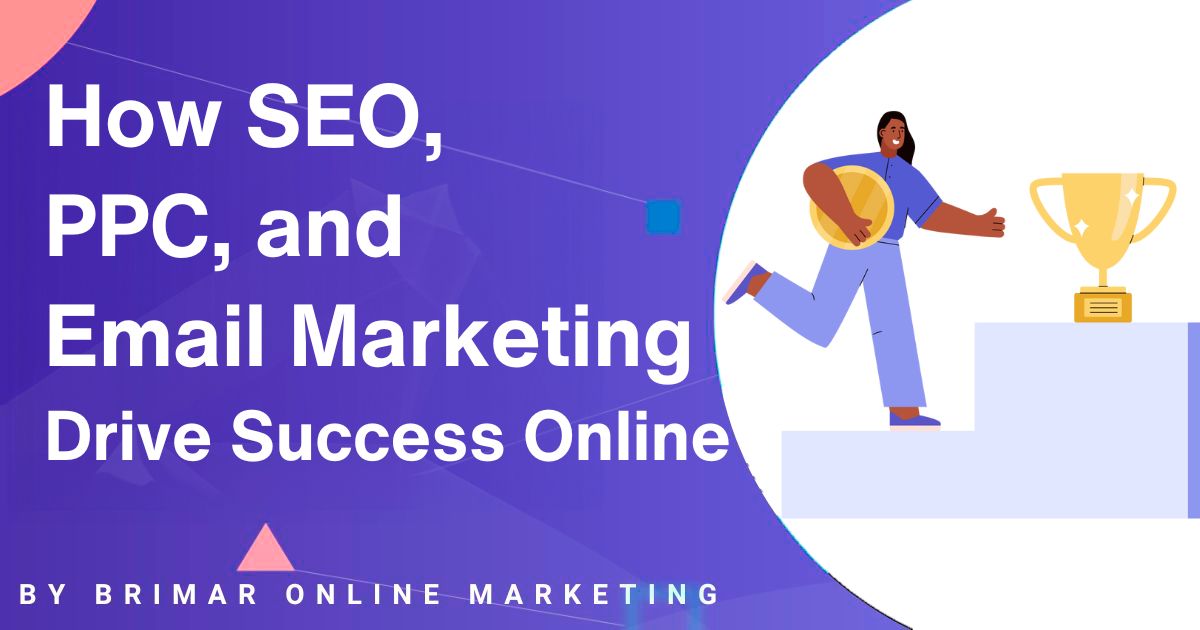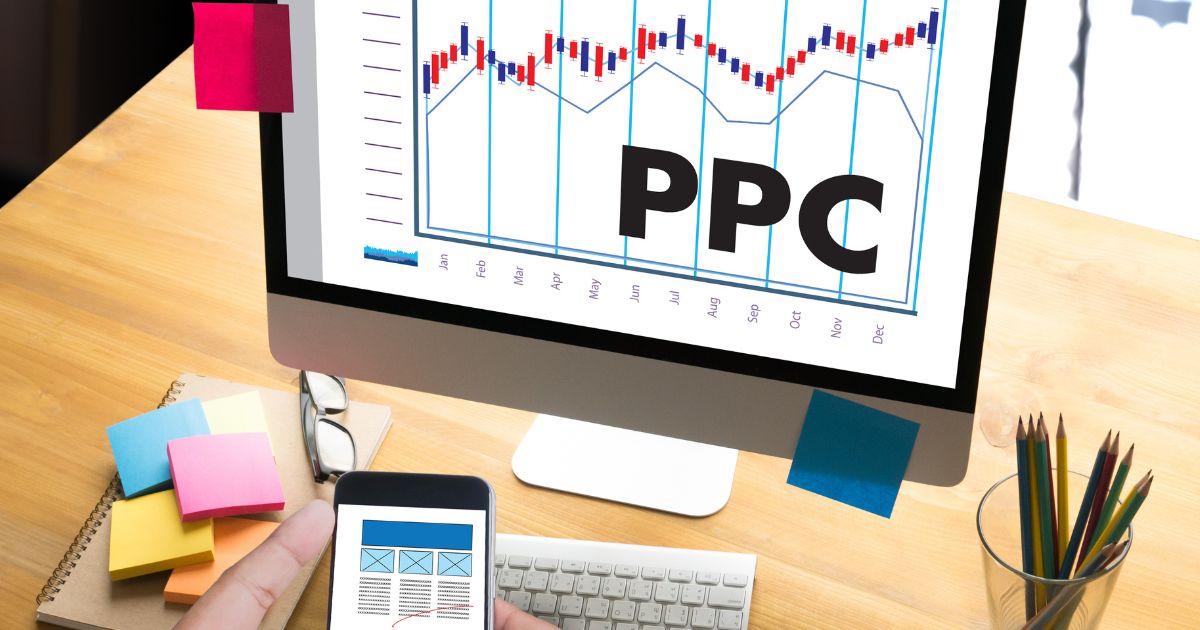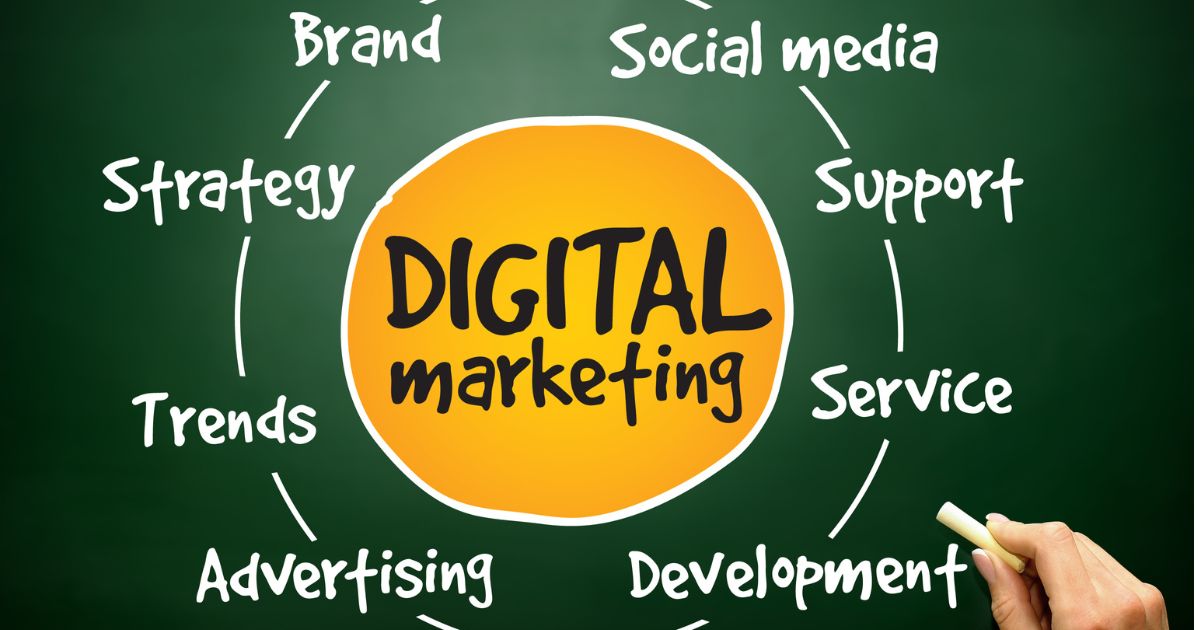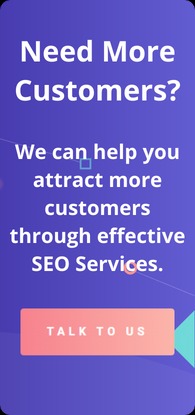
In online business, staying competitive requires a robust digital marketing strategy.
Three primary drivers of success are Search Engine Optimization (SEO), Pay-Per-Click (PPC) advertising, and email marketing.
Each plays a unique role in increasing visibility, driving engagement, and converting leads into loyal customers.
When used effectively, these strategies create a powerful synergy that helps brands thrive, even in highly competitive markets.
This article explores the critical aspects of SEO, PPC, and email marketing and how they can be integrated for maximum impact.
SEO’s Role in Online Success
What is SEO?
SEO, or Search Engine Optimization, refers to optimizing a website to increase its visibility in search engine results.
The ultimate goal is to attract organic (non-paid) traffic from users searching for relevant information, products, or services.
SEO involves several elements, including keyword research, content optimization, and improving site structure.
When done right, SEO can help websites achieve higher rankings on search engines, increasing brand exposure and credibility.
Start Attracting Customers Through SEO Today!
We can help you attract new customers through Tailored Search Engine Optimization Strategies for Your Business.
Key SEO Techniques to Boost Rankings
- On-Page Optimization: Optimizes individual web pages to rank higher and earn relevant traffic.
Techniques include using targeted keywords, crafting high-quality and relevant content, optimizing headers and images, and including meta descriptions.
By tailoring on-page elements, businesses can create content that resonates with their target audience and ranks well. - Off-Page Optimization: Off-page SEO primarily focuses on building authority and credibility through backlinks.
These are links from other websites that point to your site, indicating to search engines that your content is valuable and trustworthy.
Social signals from platforms like Facebook and X also contribute to a website’s credibility, helping it gain favor with search engines. - Technical SEO: Optimizes the website’s technical structure to improve user experience and search engine indexing.
Factors such as fast loading speed, mobile-friendliness, secure encryption (HTTPS), and a clean site structure all contribute to the effectiveness of technical SEO.
Addressing these aspects ensures that users and search engines can easily access and navigate your content.
Benefits of SEO in Competitive Markets
In competitive markets, SEO offers several advantages that make it a powerful tool for long-term success:
- Long-Term Organic Growth: SEO is a cost-effective strategy that generates sustainable traffic over time, even if it requires upfront effort.
- Cost-Effectiveness: Compared to paid advertising, SEO can deliver impressive results with relatively lower costs, making it especially valuable for businesses with limited budgets.
- Increased Visibility and Engagement: Higher search engine rankings drive visibility, increasing the chances of attracting qualified leads and engaging users genuinely interested in the brand.
Integrating PPC to Gain Instant Visibility
What is PPC Advertising?

PPC, or Pay-Per-Click, is an online advertising model where advertisers pay a fee each time someone clicks on their ad.
Unlike SEO, which builds organic traffic over time, PPC offers immediate visibility and exposure to target audiences.
PPC ads can appear on search engines, social media platforms, and other digital spaces, allowing brands to reach users actively searching for relevant content or products.
Key PPC Platforms and Ad Types
- Google Ads and Bing Ads: These search engine advertising platforms allow businesses to display ads based on specific keywords.
By targeting keywords prospective customers search for, brands can drive high-intent website traffic. - Social Media Ads: Platforms like Facebook, Instagram, and LinkedIn offer PPC ad options that enable businesses to target users based on interests, demographics, and behaviors.
Social media ads allow brands to connect with audiences in a highly personalized way. - Various Ad Formats: PPC advertising includes different ad formats, such as search ads, display ads, and video ads. Each format serves a unique purpose.
For example, search ads appear on search engine results pages, while display ads reach users across a network of websites, and video ads capture attention on platforms like YouTube.
Benefits of PPC in Competitive Markets
PPC advertising offers several immediate advantages for businesses looking to compete online:
- Immediate Results: Unlike SEO, which can take time to show results, PPC delivers traffic almost instantly, helping brands gain quick visibility.
- Enhanced Control over Targeting and Budget: PPC allows advertisers to control who sees their ads by setting parameters for location, age, interests, and more.
This level of precision enables businesses to reach specific audiences, maximizing the return on investment (ROI).
Email Marketing as a Direct Channel to Customers
Basics of Email Marketing
Email marketing involves sending targeted messages to a group of subscribers through email.
It’s a direct line to customers, allowing businesses to deliver personalized messages, promotions, and updates.
Unlike other channels, email marketing enables brands to foster customer relationships over time, building loyalty and driving repeat engagement.
Despite being one of the oldest digital marketing methods, email remains a highly effective and profitable channel for driving sales and brand loyalty.
Key Components of a Successful Email Marketing Campaign
- Personalized Content and Segmentation: Effective email marketing begins with understanding the audience.
Segmentation allows brands to divide their subscribers into smaller groups based on demographics, behavior, and interests.
Personalized content tailored to each segment helps increase engagement and conversion rates. - Automated Workflows and A/B Testing: Automation tools enable brands to send timely and relevant emails to subscribers based on specific triggers, such as abandoned carts or completed purchases.
A/B testing different elements (like subject lines or images) helps optimize emails for better performance by showing what resonates most with the audience.
Benefits of Email Marketing in Competitive Markets
Email marketing stands out as a powerful channel, especially in competitive environments:
- High ROI and Brand Loyalty: Email consistently delivers one of the highest ROIs of any digital marketing channel, mainly due to its low costs and direct nature.
Brand nurturing relationships with subscribers can foster loyalty and encourage repeat purchases. - Direct and Personalized Communication: Email provides a unique opportunity for one-on-one communication, enabling brands to connect with customers personally.
This builds trust, strengthens customer relationships, and encourages long-term engagement.
Integrating SEO, PPC, and Email Marketing for Maximum Impact
Creating a Cohesive Digital Strategy

Creating a cohesive strategy that aligns goals and messaging across all channels is essential to maximize the effectiveness of SEO, PPC, and email marketing.
For example, insights from PPC keyword data can inform SEO strategies, helping brands optimize their content to target the most relevant search terms.
Meanwhile, insights from email marketing campaigns can reveal which types of content and offers resonate best with customers, influencing other marketing efforts.
In industries like finance, where automated Forex market makers and algorithm-driven platforms dominate, digital marketing strategies must adapt to maintain competitiveness.
This includes integrating specialized keywords and content that attract a highly targeted audience, optimizing campaigns for maximum reach among users with specific financial interests, and delivering personalized emails that engage customers directly.
Measuring and Analyzing Performance
Analytics tools are crucial in understanding how SEO, PPC, and email marketing contribute to overall success.
Tools like Google Analytics provide valuable data on website traffic and user behavior, while email marketing platforms offer insights into open rates, click-through rates, and conversions.
By consistently measuring and analyzing these metrics, businesses can determine which strategies drive the best results and adjust their approach accordingly.
Adjusting Strategy Based on Market Trends
Competitive markets demand flexibility and a willingness to adapt.
As trends and customer preferences evolve, brands must be prepared to adjust their SEO, PPC, and email marketing strategies.
For instance, if new search terms gain popularity, SEO content can be updated to target those keywords.
Similarly, PPC campaigns can be optimized based on seasonal trends or audience shifts, while email marketing content can be tailored to reflect current consumer interests.
Expanding Reach with Content Marketing and Social Media
Content marketing and social media marketing play pivotal roles in extending a brand’s reach and creating touchpoints with potential customers.
Through strategic content creation, businesses can share valuable content that resonates with their ideal customers, answering their questions, solving their problems, and building trust.
Blog posts, videos, and infographics are powerful forms of content that attract attention and create brand awareness, especially when shared on social media channels.
A well-crafted blog post with relevant keywords can help capture organic search results, driving traffic to the website over the long run.
In conjunction with social media marketing, content marketing enables businesses to reach a wider audience, positioning their brand in front of the right people at the right time.
Businesses must adopt a holistic approach that combines SEO, PPC, and content marketing to reach the top of search engine results and increase their online visibility.
By regularly publishing quality blog posts targeting relevant keywords, businesses can support their SEO strategy while offering insights that appeal to their target audience.
For small businesses and business owners with limited budgets, content marketing is a cost-effective way to generate leads and build a solid foundation for future growth.
Enhancing SEO with Local SEO and Comprehensive Strategies
Optimizing for local SEO can be a game-changer for small businesses looking to expand their customer base within specific geographic areas.
Local SEO focuses on making a business more visible to people searching within a specific location, which is especially valuable for brick-and-mortar stores and service providers.
For example, an online marketing strategy targeting local SEO can include creating location-specific pages, optimizing Google My Business profiles, and using local keywords that potential customers are searching for.
By prioritizing local SEO, business owners can increase their website’s visibility and make it easier for nearby potential customers to find their services.
Combining local SEO with a strong SEO strategy designed for a global audience can deliver comprehensive benefits.
Whether targeting a local or global audience, staying updated on search engine algorithms and best practices is essential to ensure consistent online visibility.
SEO efforts can yield long-term benefits, providing a steady flow of organic traffic and helping businesses compete effectively within their market.
Leveraging PPC Strategies for Immediate Impact
Pay-per-click advertising offers an ideal solution for businesses aiming to reach specific goals quickly.
Unlike traditional marketing methods, PPC strategies allow for precise targeting of audiences based on location, demographics, and interests.
This level of control ensures that ad copy is shown to the right people at the right time, maximizing the chances of engagement and conversion.
Through continuous improvement and performance analysis, businesses can adjust their PPC campaigns to achieve better results and maximize their marketing budget.
In competitive markets, PPC data can also provide valuable insights that benefit other digital marketing efforts, such as SEO and content marketing.
For example, keywords that perform well in PPC campaigns can be integrated into SEO content, increasing the potential for organic rankings.
By combining PPC and SEO, businesses can build a robust online presence, driving immediate and long-term results.
Email Campaigns as a Foundation for Customer Retention

Email marketing remains one of the most reliable digital channels for nurturing relationships with a brand’s customer base.
Through targeted email campaigns, businesses can communicate directly with their audience, offering personalized messages, product updates, and exclusive offers that foster brand loyalty.
An engaged email list allows businesses to reach customers with relevant content, creating a touchpoint that complements their other digital marketing efforts.
With A/B testing and automated workflows, email marketing enables businesses to optimize performance and ensure messages resonate with specific customer segments.
Email marketing provides an effective means of engagement that often surpasses other channels for small businesses and business owners looking to build a solid foundation for long-term success.
Additionally, email campaigns offer valuable insights into customer preferences, allowing for continuous improvement in content creation, product development, and other areas.
A robust email marketing strategy supports customer retention, boosts online sales, and contributes to business growth.
Building a Robust Online Presence Across Various Digital Platforms
In a comprehensive approach to digital marketing, using multiple digital channels is essential to reach a wider audience and create a cohesive brand experience.
A solid online presence requires businesses to optimize their websites, create valuable content, engage in social media marketing, and run targeted ads.
Each channel uniquely enhances online visibility and drives consumer engagement, making it crucial to integrate them in a way that aligns with the company’s business goals.
Whether operating an online store or offering services, establishing a strong digital footprint can attract a global audience and ensure the brand is positioned effectively.
With content tailored to mobile devices and desktop users, businesses can ensure accessibility and engagement across all customer touchpoints.
Utilizing Analytics for Continuous Improvement and Better Results
Data-driven decision-making is fundamental to achieving optimal results in digital marketing.
Tools like Google Analytics allow businesses to track key performance indicators (KPIs), monitor website traffic, and analyze consumer behavior, providing valuable insights that inform marketing strategies.
For instance, tracking KPIs such as conversion rates, bounce rates, and click-through rates reveals which elements of the website or campaign need improvement.
In a competitive landscape, regularly analyzing data ensures that businesses can adapt their approach based on what is working, enabling continuous improvement.
By refining PPC strategies, SEO efforts, and content marketing tactics based on data, businesses can make informed adjustments that improve their reach and effectiveness over time.
This commitment to optimization, combined with real-time insights, supports long-term success.
Establishing a Long-Term Strategy for Sustainable Growth
While quick wins are valuable, building a digital marketing strategy focused on long-term growth delivers sustainable benefits.
SEO, for instance, is a long-term strategy that requires consistent effort but offers lasting results regarding organic rankings and brand authority.
By consistently creating valuable content that addresses customer needs, businesses can improve their organic search results and attract potential customers without relying exclusively on paid ads.
Incorporating content that addresses specific goals, such as educating the audience or highlighting product benefits, supports SEO and content marketing efforts while reinforcing the brand’s reputation.
A well-rounded approach, emphasizing long-term benefits of SEO and a continuous commitment to quality, positions businesses to thrive even amid changing market conditions.
Building a Strategy Aligned with Business Goals and Ideal Customers
Every digital marketing strategy should align with a business’s specific goals and the needs of its ideal customers.
Identifying and understanding the target audience enables businesses to tailor their content and outreach efforts, ensuring they attract the right people.
A digital marketing agency, for example, might use case studies to showcase successful campaigns and illustrate how their services support clients’ business growth.
Demonstrating tangible results appeals directly to business owners looking to invest in online marketing strategies that deliver measurable outcomes.
Whether focusing on a local market or aiming to reach a global audience, crafting an approach that aligns with customer preferences and pain points is essential.
From ad copy to email content, every message should speak to the target audience’s needs, helping to establish credibility and drive engagement.
Final Words
A comprehensive marketing approach is essential for businesses aiming to achieve lasting success.
Combining SEO, PPC, and email marketing with a strategic focus on content marketing and local SEO provides a solid foundation for growth and competitiveness.
Business owners who embrace these interconnected elements can enhance their online visibility, build brand awareness, and create meaningful connections with customers across various digital channels.
With a strong commitment to understanding consumer behavior and refining their approach over time, businesses can navigate the challenges of the competitive landscape and position themselves for long-term success in the online marketplace.
Our SEO Services Have Helped Our Clients Increase Their Revenue!
“I highly recommend Brimar if your looking to grow your online business. You will be satisfied with the high level of expertise and high quality of services. It has helped my business grow by leaps and bounds.”
CEO

